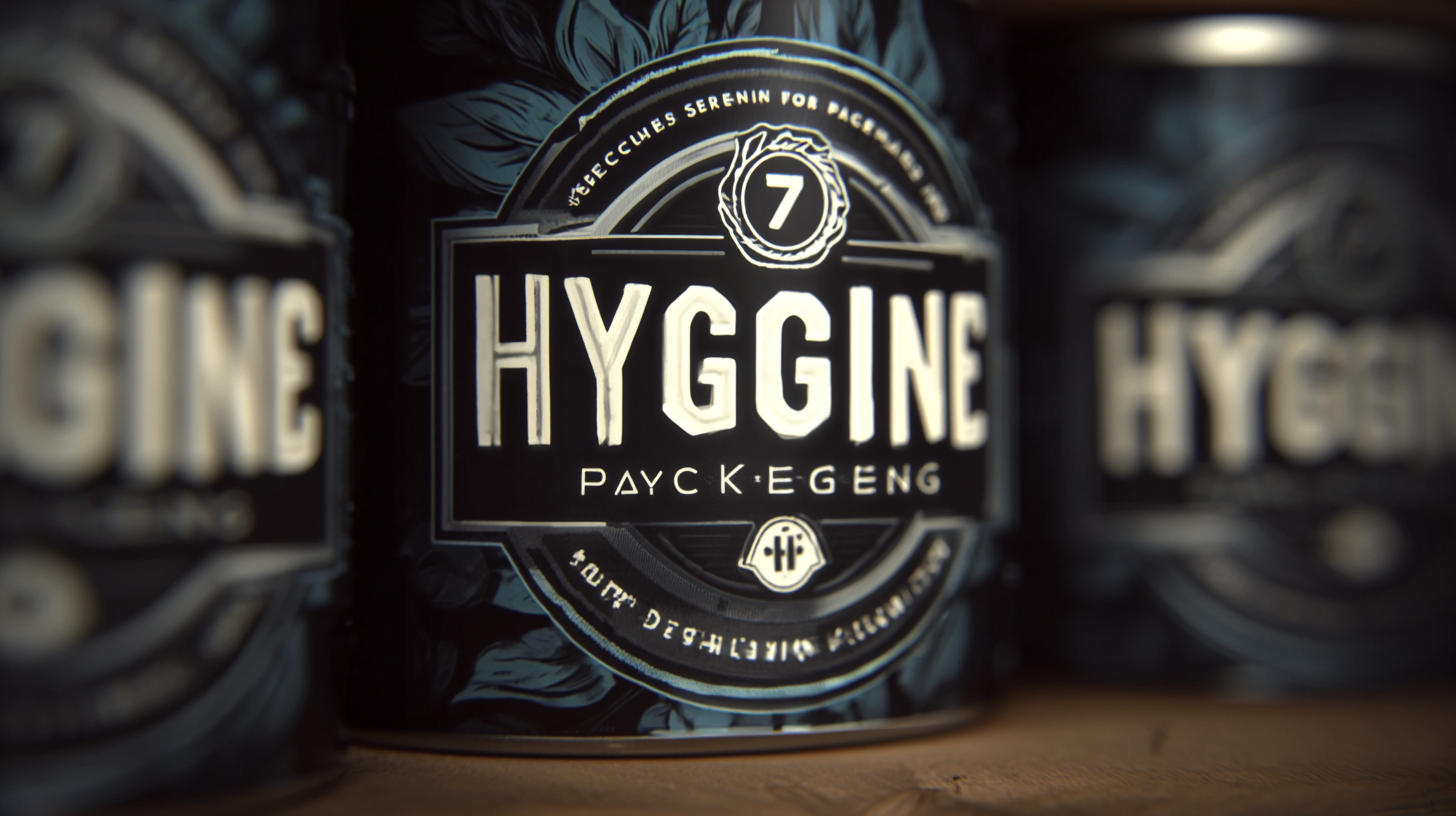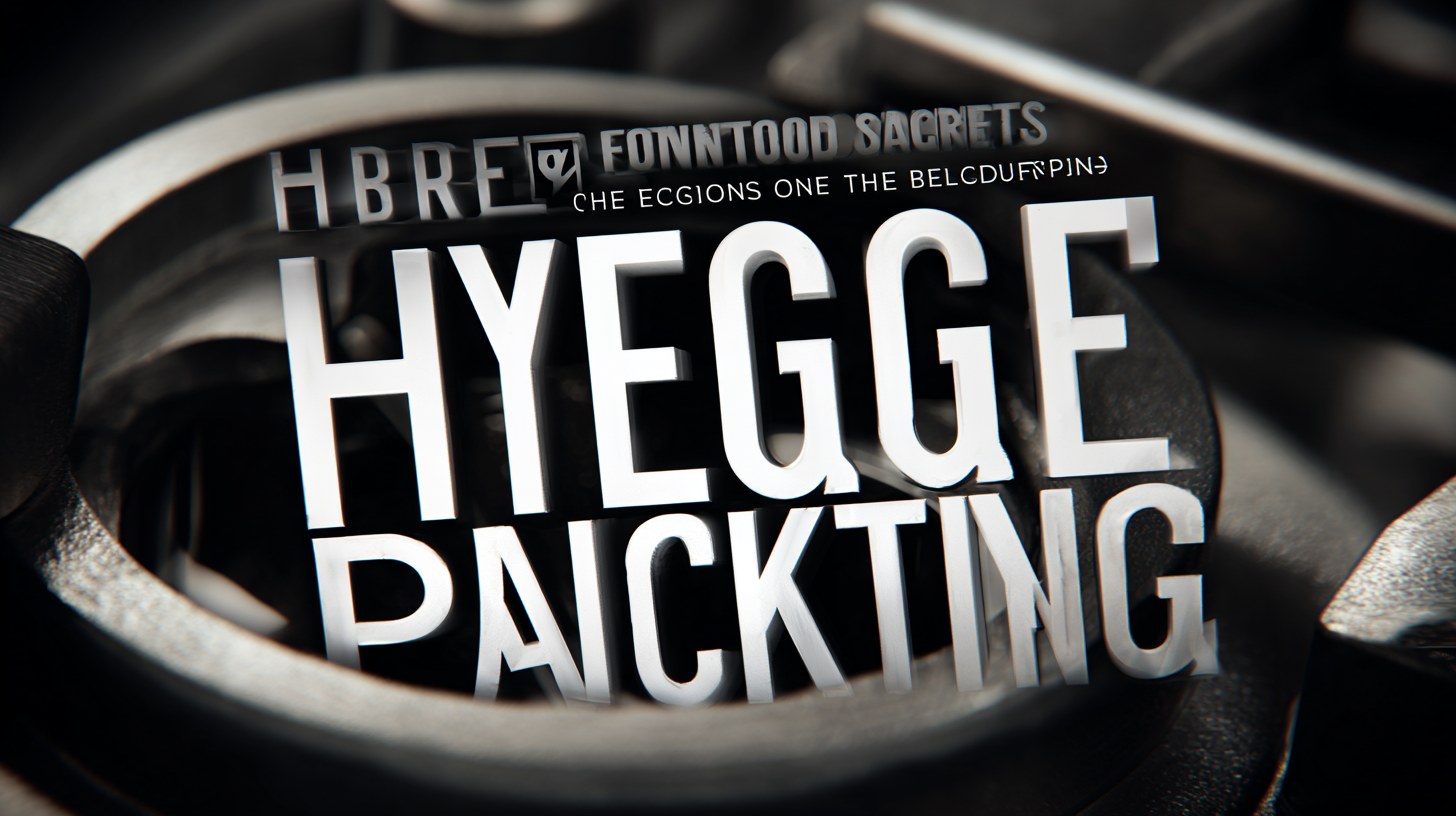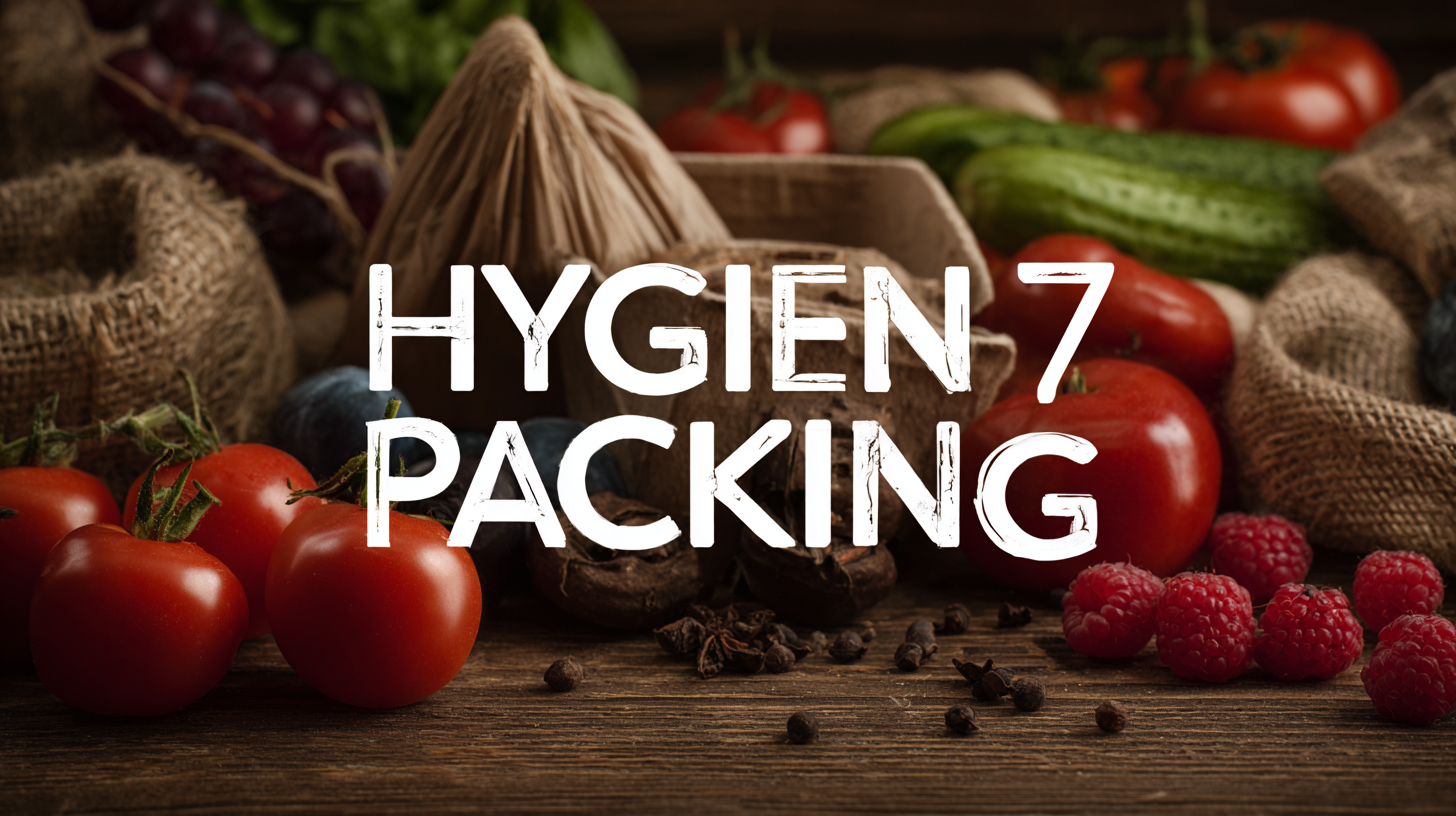
7 Secrets to Choosing the Best Hygienic Food Packaging Solutions
The demand for Hygienic Food Packaging has surged in recent years, driven by increased consumer awareness surrounding food safety and hygiene standards. According to a report by MarketsandMarkets, the global food packaging market is expected to reach USD 500 billion by 2026, growing at a CAGR of 5.5% from 2021. This growth underscores the critical importance of selecting appropriate packaging solutions that not only protect food products but also ensure their safety and freshness throughout the supply chain.

As leading manufacturing factories around the world innovate in materials and technologies, the challenge for businesses lies in navigating the multitude of options available. In this blog, we will explore seven essential secrets to help you choose the best Hygienic Food Packaging solutions tailored to your needs, ensuring compliance with industry standards and appealing to health-conscious consumers.
Understanding Industry Production Standards for Food Packaging
When selecting hygienic food packaging solutions, understanding industry production standards is paramount to ensuring food safety and quality. Various regulations, such as the FDA standards in the United States or the EU regulations in Europe, dictate the materials and processes permitted for food contact applications. These guidelines are designed to minimize risks associated with chemical leaching and microbial contamination, thereby safeguarding consumer health. It’s crucial for manufacturers to keep abreast of these standards to ensure that their packaging materials not only comply but also enhance the safety of the food products they encase.
Moreover, being aware of certifications and audits is essential in the selection process. Packaging suppliers should be able to provide proof of compliance with relevant industry standards, such as ISO certifications or third-party testing results. These accreditations serve as a guarantee that a packaging solution has been evaluated and meets established hygienic criteria. In an increasingly competitive market, choosing packaging that adheres to high production standards not only promotes safety but can also bolster brand reputation, making it a win-win for both manufacturers and consumers.
Key Factors to Consider for Hygienic Food Packaging Solutions
When selecting hygienic food packaging solutions, several key factors should be taken into account to ensure both safety and quality. First, the material used in packaging plays a crucial role in maintaining food integrity. According to a report by the Food Safety and Inspection Service (FSIS), packaging materials that are non-toxic and resistant to moisture can significantly reduce the risk of contamination.
Tip: Always opt for packaging that meets FDA standards for food contact materials to ensure safety and compliance.
Another essential factor is the design and functionality of the packaging. Research indicates that innovative designs, such as vacuum-sealed and modified atmosphere packaging (MAP), can extend food shelf life by up to 50%, as highlighted in the Journal of Food Science. These methods help in preserving flavor and minimizing spoilage, which are vital for public health.
Tip: Look for packaging solutions that offer convenience features, such as resealability, to enhance consumer usability and reduce food waste.
Lastly, consider sustainability in your packaging choices. Data from the Environmental Protection Agency (EPA) suggests that eco-friendly materials not only support environmental efforts but also resonate with increasingly conscious consumers. Adopting biodegradable or recyclable options can significantly enhance brand loyalty.
Tip: Engage with suppliers who prioritize sustainable practices to improve your product's marketability.
Innovative Materials Driving Hygienic Packaging Choices
 When it comes to selecting hygienic food packaging solutions, innovative materials play a crucial role in ensuring both safety and sustainability. Recent reports from the Food and Agriculture Organization (FAO) indicate that approximately 1.3 billion tons of food waste occur annually due to inadequate packaging. This staggering figure underscores the need for advanced packaging solutions that not only preserve food but also enhance hygiene. Materials such as bioplastics, which are derived from renewable resources, are gaining popularity for their ability to reduce environmental impact while maintaining health standards.
When it comes to selecting hygienic food packaging solutions, innovative materials play a crucial role in ensuring both safety and sustainability. Recent reports from the Food and Agriculture Organization (FAO) indicate that approximately 1.3 billion tons of food waste occur annually due to inadequate packaging. This staggering figure underscores the need for advanced packaging solutions that not only preserve food but also enhance hygiene. Materials such as bioplastics, which are derived from renewable resources, are gaining popularity for their ability to reduce environmental impact while maintaining health standards.
Tip: When choosing packaging, consider bioplastics for their biodegradable properties, which can help minimize landfill waste while providing effective barriers against contaminants.
Another innovative approach involves the use of antimicrobial coatings. According to a study published in the Journal of Food Science, these coatings can significantly reduce bacterial contamination on surfaces, making them ideal for packaging fresh produce and meats. As consumers become increasingly health-conscious, opting for packaging that incorporates active ingredients to combat pathogens can improve the safety of food products.
Tip: Look for packaging that incorporates antimicrobial features, especially for perishable items, to enhance overall food safety and extend shelf life.
The Role of Digital Technology in Food Packaging Safety
The role of digital technology in food packaging safety has become increasingly crucial as the global demand for safe and hygienic food products rises. According to a report by Grand View Research, the global food packaging market is expected to reach $1 trillion by 2028, driven largely by consumer demand for high-quality, safe food. Digital technologies, such as blockchain and the Internet of Things (IoT), are being integrated into the food supply chain to enhance traceability, ensuring that from farm to fork, the food packaging remains hygienic and safe.
 Blockchain technology, for instance, provides immutable records of food product histories, effectively eliminating the risk of contamination during packaging and transit. A study published in the Journal of Food Science found that implementing blockchain for food safety could reduce the incidence of foodborne illnesses by up to 30%. Additionally, IoT sensors can monitor temperature and humidity levels in real-time, ensuring that food packaging conditions are maintained within safe parameters. These advancements not only enhance safety but also build consumer trust, as 75% of shoppers are more likely to purchase products when they know they can trace sourcing and safety information about the packaging.
Blockchain technology, for instance, provides immutable records of food product histories, effectively eliminating the risk of contamination during packaging and transit. A study published in the Journal of Food Science found that implementing blockchain for food safety could reduce the incidence of foodborne illnesses by up to 30%. Additionally, IoT sensors can monitor temperature and humidity levels in real-time, ensuring that food packaging conditions are maintained within safe parameters. These advancements not only enhance safety but also build consumer trust, as 75% of shoppers are more likely to purchase products when they know they can trace sourcing and safety information about the packaging.
Evaluating Cost vs. Quality in Hygienic Packaging Solutions
When evaluating cost versus quality in hygienic packaging solutions, it's essential to recognize the growing demand for eco-friendly alternatives. Traditional packaging materials, especially single-use plastics, have come under scrutiny for their environmental impact. As industries seek to adopt more sustainable practices, the cost of transitioning to biodegradable options often raises concerns. However, it's important to weigh these costs against the benefits of reducing environmental harm and appealing to increasingly eco-conscious consumers.
Investing in high-quality, hygienic packaging solutions can lead to long-term savings. Biodegradable materials may have a higher upfront cost, but their ability to mitigate environmental degradation offers significant returns in brand reputation and customer loyalty. Today's consumers are more likely to support brands that prioritize sustainability, making quality packaging a vital component of a successful business strategy. As a result, evaluating hygiene, sustainability, and cost should be a holistic approach to ensure that companies meet both their economic goals and their commitment to environmental responsibility.
7 Secrets to Choosing the Best Hygienic Food Packaging Solutions - Evaluating Cost vs. Quality in Hygienic Packaging Solutions
| Packaging Material | Cost per Unit | Durability | Hygiene Rating | Environmental Impact |
|---|---|---|---|---|
| Plastic Film | $0.05 | Medium | Good | High |
| Cardboard | $0.10 | Medium | Excellent | Low |
| Glass | $0.30 | High | Excellent | Medium |
| Biodegradable Plastics | $0.20 | Medium | Good | Very Low |
| Metal Containers | $0.25 | Very High | Excellent | Medium |



